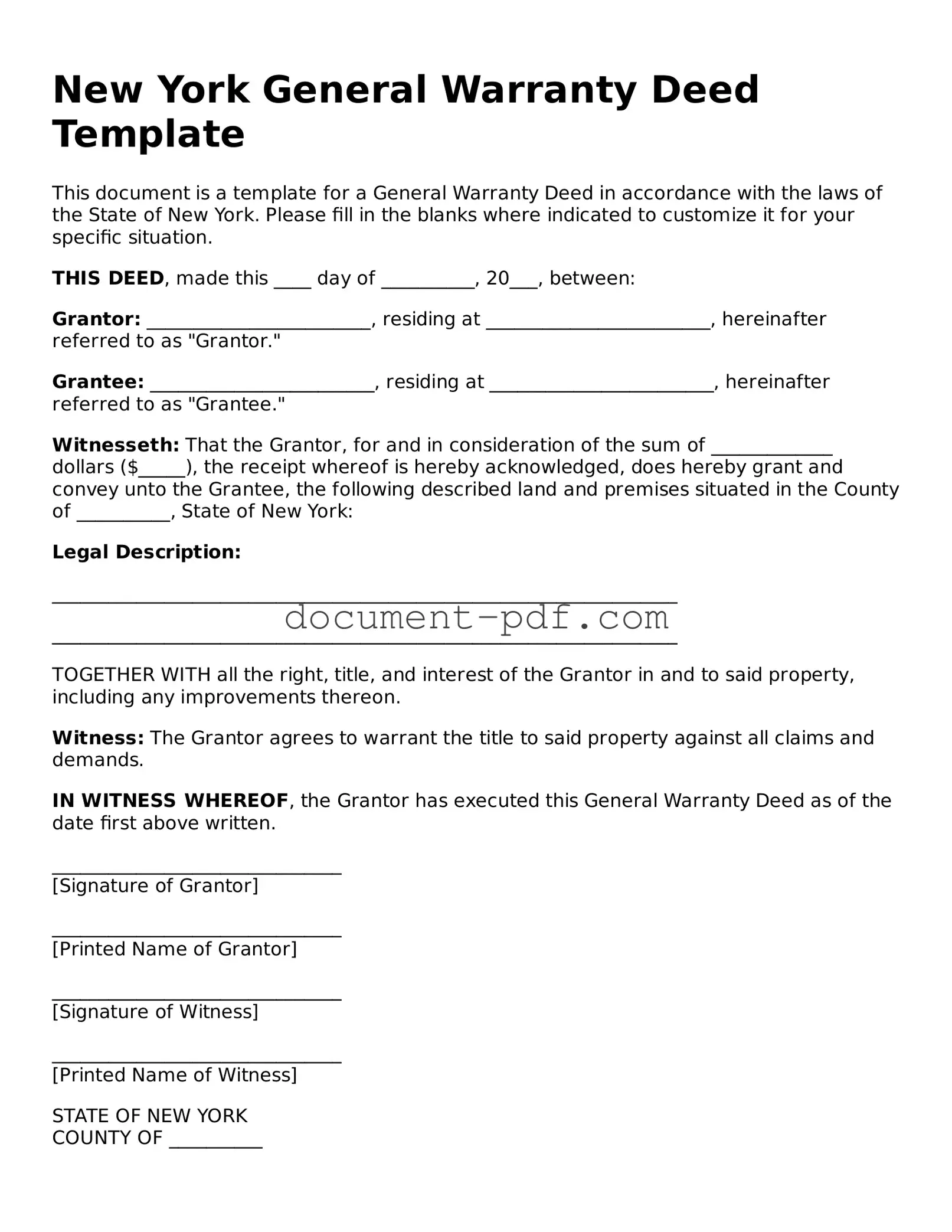New York General Warranty Deed Template
This document is a template for a General Warranty Deed in accordance with the laws of the State of New York. Please fill in the blanks where indicated to customize it for your specific situation.
THIS DEED, made this ____ day of __________, 20___, between:
Grantor: ________________________, residing at ________________________, hereinafter referred to as "Grantor."
Grantee: ________________________, residing at ________________________, hereinafter referred to as "Grantee."
Witnesseth: That the Grantor, for and in consideration of the sum of _____________ dollars ($_____), the receipt whereof is hereby acknowledged, does hereby grant and convey unto the Grantee, the following described land and premises situated in the County of __________, State of New York:
Legal Description:
___________________________________________________________________
___________________________________________________________________
TOGETHER WITH all the right, title, and interest of the Grantor in and to said property, including any improvements thereon.
Witness: The Grantor agrees to warrant the title to said property against all claims and demands.
IN WITNESS WHEREOF, the Grantor has executed this General Warranty Deed as of the date first above written.
_______________________________
[Signature of Grantor]
_______________________________
[Printed Name of Grantor]
_______________________________
[Signature of Witness]
_______________________________
[Printed Name of Witness]
STATE OF NEW YORK
COUNTY OF __________
On the ____ day of __________, 20___, before me, the undersigned, a Notary Public in and for said State, personally appeared ________________, known to me to be the individual described in and who executed the foregoing instrument.
_______________________________
[Notary Public Signature]
_______________________________
[Notary Public Printed Name]
My Commission Expires: ____________
